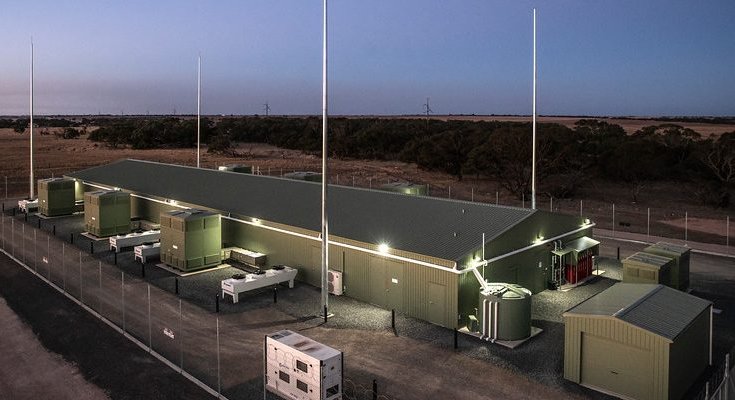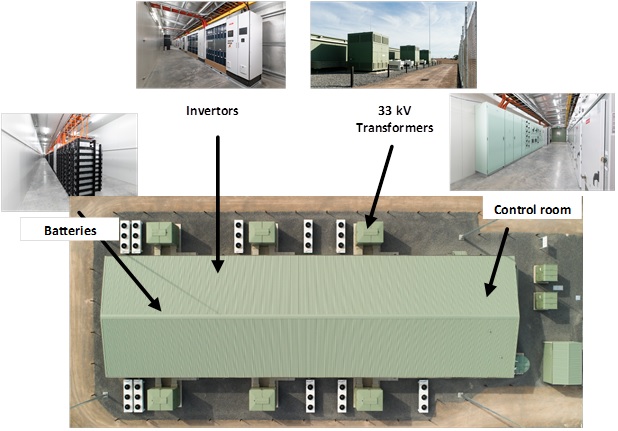The Australian Renewable Energy Agency (ARENA) says a 30 MW/8 MWh grid-scale battery project at the Dalrymple substation on South Australia’s Yorke Peninsula is now live and connected to the National Electricity Market (NEM).
The Dalyrmple substation is located seven kilometres south-west of Stansbury, a small town located on the east coast of Yorke Peninsula.
Construction of the Energy Storage for Commercial Renewable Integration (ESCRI) facility was awarded to Adelaide company Consolidated Power Projects in 2017. CPP worked with inverter manufacturer ABB and Samsung; with the latter providing the lithium ion batteries.
The generation license for ESCRI was issued in May last year and AEMO registration completed in June. Formal commissioning and much of the testing of the Dalrymple battery was completed by the end of October.
While not anywhere near as large as the “Tesla Big Battery” (Hornsdale Power Reserve), the ESCRI project will offer a number of benefits:
- Fast-acting power response when there are system issues further up the grid.
- Operating as part of a microgrid with the 90MW Wattle Point wind farm and local rooftop solar power installations when grid supply is interrupted – providing 4,500 customers in the Dalrymple service area with backup power for 2-3 hours in a situation where the sun isn’t shining and wind isn’t blowing.
- Reducing constraints on the Heywood interconnector.
.. and other electricity market services.
The ESCRI project was developed and is owned by transmission provider ElectraNet, with AGL operating it under a long-term lease agreement. It features two levels of control – the first is automated and responds to system events, while the second level is for market trading and charging is controlled by AGL.
ARENA stumped up $12 million for the construction of the $30 million facility under the Agency’s Advancing Renewables Programme.
“It is clear that grid scale energy storage has a role to play our future energy mix,” said ARENA Acting CEO Nicola Morris. ” ESCRI demonstrates that utility scale batteries can deliver a range of market services and back up power when it is needed.”
Live data from ESCRI and Wattle Point wind farm can be viewed here.
ARENA has funded four grid-scale batteries to date. One is Infigen’s Lake Bonney battery currently under construction in South Australia, which is a 25 MW/52 MWh facility located adjacent to the 278.5 MW Lake Bonney Wind Farm. The other two systems are in Victoria – the 30 MW/30 MWh Ballarat Battery Energy Storage System and the 25 MW/50 MWh Gannawarra battery system, which is co-located at the 60 MW Gannawarra Solar Farm.



 RSS - Posts
RSS - Posts



So … from the above the new battery plant is 30MW instantaneous and 8MWh …
So rather than 2-3 hours, more like 17 minutes?
It is designed for a very high peak output from a comparatively small storage capacity, which is very useful for grid management porpoises:
https://www.escri-sa.com.au/about/
But when it comes to supplying backup power 4,500 people won’t draw anything close to 30 megawatts. That would be around 1,700 homes which in SA on average draw around 0.6 kilowatts of grid power. So it could supply those homes for about 8 hours on average if the battery was fully charged, but more like 2-3 hours during a period of high electricity consumption.